#celtic reconstructionism
Text
Important Facts about Samhain from an Irish Celtic Reconstructionist
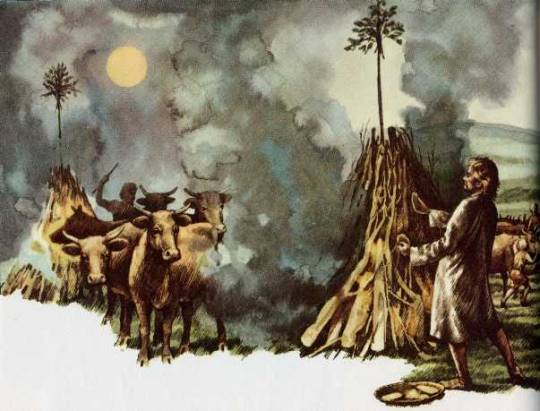
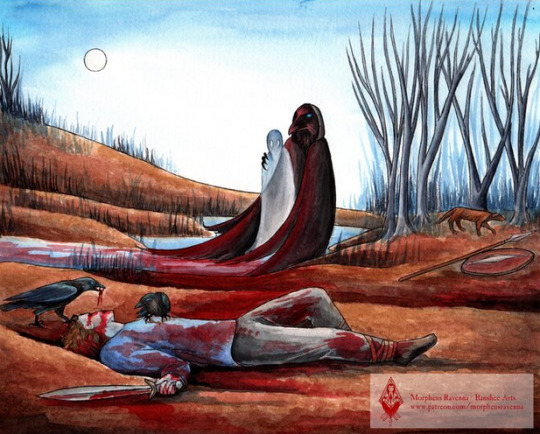

Pronunciation
SOW-in or SOW-een ~NOT~ Sam-han, Sam-win etc.
Dates
Most reconstructionists celebrate Samhain on Oct 31-Nov 1, however some may choose to celebrate on Gregorian Nov 13-14 as this would match the Julian dates of Oct 31-Nov 1. Some also believe that it was a three day festival spanning Oct 31- Nov 2 on which Nov 2 is specifically devoted to ancestral veneration, but there is no specific evidence of this, only possible extrapolation from more modern practices.
Following the Celtic method of days beginning at sunset, regardless of the specific dates you choose to celebrate on your festivities should begin at sunset and end at sunset.
Importance in the Mythos
Ná Morrighan has a strong connection to this time of year thanks to the story of Cath Dédenach Maige Tuired (The Last Battle of Mag Tuired) in which she is found depicted as the ‘Washing Woman’ (sometimes washing herself in the river and other times washing the bloodied armor of the soldiers that would die that day), on the eve of the battle which is also Samhain. The Dagda approaches her and couples with her (creating the ‘Bed of the Couples’ along the bank of river and granting Dagda her blessing in the battle to come). This encounter seems to over emphasize the liminality of the encounter by taking place during the changing of the year and with the couple each standing with ‘one foot on either bank’ of the river.
She and her sisters (Badb and Macha) then use various forms of magic to rain destruction on their enemies (in the form of fire and blood). After the day is won Morrighan speaks a prophecy that describes what is taken by some to be the end of days and others to be the events which will later lead to the Ulster Cycle.
Beneath the peaceful heavens lies the land.
It rests beneath the bowl of the bright sky.
The land lies, itself a dish, a cup of honeyed strength, there, for the taking, offering strength to each
There it lies, the splendour of the land.
The land is like a mead worth the brewing, worth the drinking.
It stores for us the gifts of summer even in winter.
It protects and armours us, a spear upon a shield
Here we can make for ourselves strong places, the fist holding the shield
Here we can build safe places, our spear-bristling enclosures.
This is where we will turn the earth. This is where we will stay.
And here will our children live to the third of three generations
Here there will be a forest point of field fences
The horn counting of many cows
And the encircling of many fields
There will be sheltering trees
So fodderful of beech mast that the trees themselves will be weary with the weight.
In this land will come abundance bringing:
Wealth for our children
Every boy a warrior,
Every watch dog, warrior-fierce
The wood of every tree, spear-worthy
The fire from every stone a molten spear-stream
Every stone a firm foundation
Every field full of cows
Every cow calf-fertile
Our land shall be rich with banks in birdsong
Grey deer before Spring
And fruitful Autumns
The plain shall be thronged from the hills to the shore.
Full and fertile.
And as time runs its sharp and shadowy journey, this shall be true.
This shall be the story of the land and its people
We shall have peace beneath the heavens.
Forever
(based on the translation by Isolde Carmody)
It is also mentioned in Echtra Cormaic that on this festival every seven years the high king would host a feast, it was at this time new laws could be enacted. (but it seems that individual Tuathas or possibly kings of the individual providence may have done this for their territories at Lughnasadh).
It seems to be a time considered especially susceptible to (or of) great change as it is the time which the Tuatha de Danann win victory over the Formorians and take control of Ireland, the invasion of Ulster takes place at this time in Táin bo Cúailnge, in Aislinge Óengusa Óengus and his bride-to-be are changed from bird to human and eventually he claims kingship of Brú na Bóinne at this time of year.
Celebration Traditions
Samhain is the beginning of the “dark half” of the year and is widely regarded as the Insular Celtic equivalent of the New Year. The “dark half” of the year was a time for story telling, in fact in this half of the year after dark is considered the only acceptable time to tell stories from the mythological and Ulster cycle (the Fenian cycle being assumed to be no older than the 12th century based on linguistic dating). Traditionally anything that had not been harvested or gathered by the time of this festival was to be left, as it now belonged to the Fae (in some areas specifically the Púca).
This was also an important time for warding off ill luck in the coming year. Large bonfires would be built and as the cattle were driven back into the community from the pastures they would be walked between these bonfires as a method of purification (the reverse custom of Bealtaine where the livestock were walked between the fires on their way out to the summer pastures). Assumed ritualistic slaughter of some of the herd would follow (though this perhaps had the more practical purpose of thinning the herd before the winter and creating enough food for the feasting). In some areas the ashes from these fires would be worn, thrown or spread as a further way to ward off evil.
Homes would be ritualistically protected from the Aos Sí (Fae or ‘Spirits’) through methods such as offerings of food (generally leaving some of the feasting outside for them), carving turnips with scary faces to warn them off (we now tend to do this with gourds), and smoke cleansing the home (in Scottish saining) traditionally with juniper, but perhaps rowan or birch might be an acceptable alternative. It is likely these would be part of the components used in Samhain bonfires as well, for the same reason.
Lastly based on later traditions as well as links in the mythology this is a time where divination practices or those with the ‘second sight’ were regarded to be especially potent.
Art Credit @morpheus-ravenna
#samhain#irish#irish mythology#irish polytheism#irish paganism#celtic reconstructionism#celtic paganism#celtic polytheism#na morrigna#the morrígan#the dagda#fire festival#blackcrowing#Irish reconstructionist
449 notes
·
View notes
Text
UNBLENDING CELTIC POLYTHEISTIC PRACTICES
Celtic Umbrella
This lesson is largely focusing on the insular Celtic nations & Brittany (Ireland/Eire, Scotland/Alba, Wales/Cymru, Cornwall/Kernow, Isle of Man/Mannin, & Brittany/Breizh) - traditionally regarded as 6 out of the 7 Celtic nations. Galicia/Galizia is the 7th, but because of a mix of the below + my own lack of knowledge, I won't be covering them.
The vast swath of Continental Celtic cultures are a different but equally complex topic thanks to extinction, revival, varying archaeological artefacts and the work of modern practioners to piece unknown parts back together.
This will serve as a quick 'n' dirty guide to the insular Celtic nations, Celtic as a label, blood percentages and ancestry, the whats and whys of "Celtic soup", and how to unblend practice.
The insular Celtic groups are split into two language groups: Brythonic languages and Gaelic languages.
Brythonic languages are Cymraeg/Welsh, Kernewek/Cornish, & Breton
Gaelic languages are Gàidhlig/Scottish, Gaeilge/Irish, & Gaelg/Manx.
The language split leads to certain folkloric and religious figures & elements being more common within the language group than without. All of these nations had historic cultural exchange and trade routes via the Celtic sea (and beyond). Despite this, it is still important to respect each as a home to distinct mythologies.
Pros/Cons of a broad Celtic umbrella
Pros
- Used within celtic nations to build solidarity
- Relates to a set of cultures that have historic cultural exchange & broad shared experiences
- A historic group category
- Celtic nations’ culture is often protected under broad legislation that explicitly highlights its ‘Celtic-ness’.
Cons
- Can be used reductively (in academia & layman uses)
- Often gives in to the dual threat of romanticisation/fetishisation & erasure
- Conflates a lot of disparate practices under one banner
- Can lead to centring ‘celtic american’ experiences.
- Celtic as a broad ancestral category (along with associated symbols) has also been co-opted by white supremacist organisations.
In this I’m using ‘Celtic’ as a broad umbrella for the multiple pantheons! This isn’t ideal for specifics, but it is the fastest way to refer to the various pantheons of deities that’ll be referenced within this Q&A (& something that I use as a self identifier alongside Cornish).
What about blood % or ancestry?
A blood percentage or claimed Celtic ancestry is NOT a requirement to be a follower of any of the Celtic pantheons. The assumption that it does or is needed to disclose can feed easily into white supremacist narratives and rhetoric, along side the insidious implications that a white person in the USA with (perceived or real) Celtic ancestry is 'more celtic' than a person of colour living in a Celtic region (along with other romanticised notions of homogenously white cultures).
Along side this, a blood percentage or distant ancestry does not impart the culture and values of the Celtic region or it's recorded pagan practices by itself. Folk traditions are often passed down within families, but blood percentage is not a primary factor within this.
Connecting with ancestry is fine, good, and can be a fulfilling experience. It stops being beneficial when it leads to speaking over people with lived experiences & centres the USA-based published and authors - which can lead to blending/souping for reasons further on.
What is 'soup'?
Celtic soup is a semi-playful term coined by several polytheists (primarily aigeannagusacair on wordpress) to describe the phenomenon of conflating & combining all the separate pantheons and practices from the (mainly) insular Celtic nations into one singular practice - removing a lot of the regionalised folklore, associated mythos, & varying nuances of the nations that make up the soup.
Why does it happen?
The quick version of this is book trends and publishing meeting romanticisation and exotification of Celtic cultures (especially when mixed with pre-lapsarian views of the Nations). It's miles easier to sell a very generally titled book with a lot of Ireland and a little of everywhere else than it is to write, source and publish a separate book on each.
This is where centering American publishers and authors becomes an issue - the popular trend of USA-based pagan publications to conflate all celtic nations makes it hard to find information on, for example, Mannin practices because of the USA’s tendency to dominate media. Think of Llewellyn’s “Celtic Wisdom” series of books.
It has also been furthered by 'quick research guides'/TL;DR style posts based on the above (which have gained particular momentum on tumblr).
The things that have hindered the process in unblending/"de souping" is the difficulty in preserving independently published pamphlets/books from various nations (often more regionalised and immediately local than large, sweeping books generalising multiple practices) along with the difficulty of accessing historic resources via academic gatekeeping.
All of this has lead to a lack of awareness of the fact there is no, one, singular Celtic religion, practice or pantheon.
Why should I de-soup or unblend my practice?
Respecting the deities
It is, by and large, considered the bare minimum to understand and research a deity's origin and roots. The conflation of all insular Celtic deities under one singular unified pantheon can divorce them from their original cultures and contexts - the direct opposite to understanding and researching.
Folklore and myth surrounding various Celtic deities can be highly regionalised both in grounded reality and geomythically - these aren't interchangeable locations and are often highly symbolic within each nation.
Brú na Bóinne, an ancient burial mound in Ireland, as an entrance to the otherworld of the Tuatha Dé Danann.
Carn Kenidjack & the Gump as a central site of Cornish folk entities feasts and parties, including Christianised elements of Bucca’s mythology.
The Mabinogion includes specific locations in Wales as well as broad Kingdoms - it’s implied that Annwn is somewhere within the historic kingdom of Dyfed, & two otherworldly feasts take place in Harlech & Ynys Gwales.
Conflating all celtic pantheons under one banner often leads to the prioritisation of the Irish pantheon, meaning all of the less ‘popular’ or recorded deities are sidelined and often left unresearched (which can lead to sources & resources falling into obscurity and becoming difficult to access).
Respecting the deities
Deities, spirits, entities, myth & folklore are often culturally significant both historically and to modern day people (just average folks along with practitoners/pagans/polytheists and organisations) located in the various Nations
A primary example is the initiatory Bardic orders of Wales and Cornwall.
Desouping/Unblending makes folklorist's lives easier as well as casual research less difficult to parse. The general books are a helpful jumping off point but when they constitute the bulk of writing on various Celtic polytheisms, they become a hinderance and a harm in the research process.
A lot of mythology outside of deities & polytheisms is also a victim of ‘souping' and is equally as culturally significant - Arthurian mythology is a feature of both Welsh and Cornish culture but is often applied liberally as an English mythology & and English figure.
Celtic nations being blended into one homogenous group is an easy way to erase cultural differences and remove agency from the people living in celtic nations. Cornwall is already considered by a large majority of people to be just an English county, and many areas of Wales are being renamed in English for the ease of English tourists.
How can I de-soup?
Chase down your sources' sources, and look for even more sources
Check your sources critically. Do they conflate all pantheons as one? Do they apply a collective label (the celts/celts/celt/celtic people) to modern day Celtic nations? How far back in history do they claim to reach?
Research the author, are they dubious in more ways than one? Have they written blog articles you can access to understand more of their viewpoints? Where are they located?
Find the people the author cites within their work - it can be time consuming but incredibly rewarding and can also give a good hint at the author's biases and research depth. You may even find useful further reading!
Find primary sources (or as close too), or translations of the originating folklore, e.g The Mabinogion. Going to the source of a pantheon’s mythos and folklore can be helpful in discerning where soup begins in more recent books as well as gaining insight into deities' actions and relationships.
Ask lots of questions
Question every source! Question every person telling you things that don't define what pantheon or region they’re talking about! Write all your questions down and search for answers! Talk to other polytheists that follow specific Celtic pantheons, find where your practices naturally overlap and where they have been forced into one practice by authors!
Be honest with yourself
There’s no foul in spreading your worship over several pantheons that fall under the celtic umbrella! A lot of polytheists worship multiple pantheons! But be aware of the potential for soup, and make sure you’re not exclusively reading and working from/with sources that conflate all practices as one.
If you approach any Celtic polytheistic path with the attitude of blood percentage or 'ancestral right', stop and think critically about why you want to follow a Celtic polytheistic path. Is it because it's the most obviously 'open' path to follow? Is it a desire to experience what other folks experience? Being critical, turning inward, and really looking at yourself is important.
Originally posted in the Raven's Keep discord server
#celtic polytheism#celtic paganism#celtic soup#celtic#celtic reconstructionism#celtic revivalism#celtic polytheist#celtic pagan#celtic religion
435 notes
·
View notes
Text
Beating the weird kid allegations? Nah bro, I used to pretend to be a witch as a kid, now I’m a Celtic Reconstructionist.
Never beating that shit, in fact, I’m in last place.
#celtic#celtic reconstructionism#pagan#paganism#irish#irish history#witchcraft#witches#weird kid allegations#weird kid#art#digital art#lgbt#autsim#religion
30 notes
·
View notes
Text
The Morrígan
“Thou hast no power against me," said Cúchulainn.
"I have power indeed," said the woman; "it is at the guarding of thy death that I am; and I shall be," said she.
The Cattle-Raid of Regamna, from the Yellow Book of Lecan
The Morrígan is depicted in the Irish cycles as a member of the Tuatha Dé Danann, the wife* of the Dagda, and a goddess ruling over the spheres of fate, death, war, and land. She is often associated with ravens, crows, and heifers, whose forms she takes.
Name & Epithets: Morrígan, Morrígu, Mórrígan (Middle Irish— “Great Queen”), Mór-Ríoghain (Modern Irish)
Role as a Goddess of War
The Morrígan is seen in the Cycles as bringing victory in war, or foretelling death in battle. In the Cath Mage Tuired, which describes how the Tuatha Dé Danann overthrew the tyrannical Fomorians, she proclaims the victory of the gods over their enemy and foretells the end of the world. In the Ulster Cycle, she is the sometimes-patron, sometimes-enemy of the hero Cúchulainn, whose death she prophesies after he offends her, and then reminded of his fate by taking the form of an old woman washing his bloodied clothes in a creek.

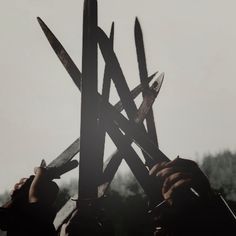
Role as a Sovereignty Goddess
Sovereignty goddesses in Irish tradition represent the land itself, and thus marriage to one creates a legitimate rule or guardianship over that land. In Early Medieval Ireland (and perhaps before), a king’s coronation would include a symbolic marriage to the land, thereby granting himself power and legitimacy. The Morrígan is one such sovereignty goddess, or at least perceived as one by the 12th Century, as the Book of Invasions names her the sister of Ériu, Banba, and Fódla, personifications of Ireland married to each of her three kings.

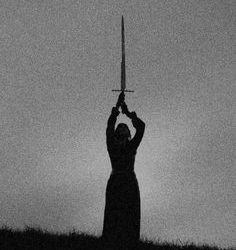
Role as a Triplicate Goddess
The Morrígan is inconsistently referred to as one of three or a combination of three figures. In the Mythological cycle, she is named as the sister of Badb (’crow’), a war goddess, and Macha, a land goddess. Together, they are called the three Morrígna. Macha is also the name of several other figures, and Badb appears barely distinguishable from the Morrígan. Whatever the case, the names appear less like the archetypal ‘Maiden, Mother, Crone’, and more like simply different aspects of the goddess given different titles, as is common in Irish religion.
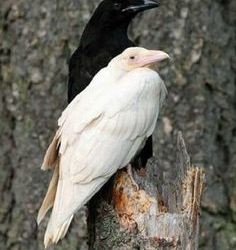
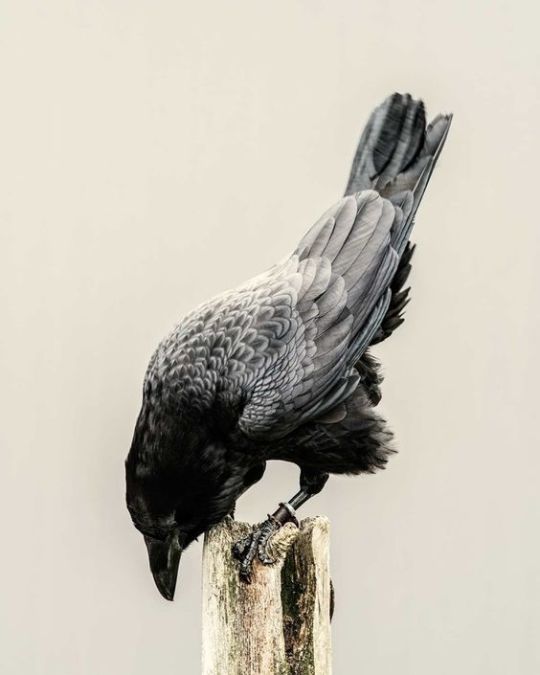
*Marriage with the Dagda
The fact of her “marriage” with the Dagda is contentious but well-supported by the texts we have access to. One of her best-known stories from the Cath Mage Tuired is the Dagda’s pact with her before the battle against the Formorians. This part of the text is often mistranslated as the Dagda meeting her [for the first time] at a certain point in the year, when really a perhaps more accurate translation would be “On this day [near Samhain] the Dagda met her yearly.” Additionally, the “union” described between her and the Dagda does not appear to be purely sexual. The word used, ‘oentaith’ is difficult to translate but probably also refers to a general agreement/pact [dil.ie/33541], not unlike a modern marriage. Additionally, as a king of the Tuatha Dé Danann, a ceremonial marriage to a sovereignty and agricultural goddess such as the Morrígan would be appropriate for the Dagda and make sense to an early Irish audience.
My UPG with the Morrígan
Recommended reading + Sources
Cath Mage Tuired [Translation] [Original]
Book of Invasions
The Cattle-Raid of Regamna
#morrigan#na morrigna#the morrigan#gaelic polytheism#irish polytheism#morrigan goddess#paganblr#celtic reconstructionism#morrigan deity
68 notes
·
View notes
Text
hallo pagan tumblr, i'm new here!
currently researching:
DEITIES
Nemetona
the Morrígan
Rhiannon
possibly also interested in:
Artemis
Loki
Sirona
PRACTICES
Reconstructionist polytheistic paganism
naturalism-focused Appalachian folk magic
Herbal medicine
Celtic druidry
Irish, Gaulish, and Appalachian spirituality in general
#celtic paganism#celtic#reconstructionism#celtic reconstructionism#celtic mythology#welsh mythology#reconstructionist paganism#pagan reconstructionist#gaulish pantheon#celtic pantheon#irish mythology#gaulish deities#paganism#pagans of tumblr#paganblr#crystal witch#earth witch#stone witch#green witch#naturalism#witchblr#witch#witchcraft#appalachian folk magic#appalachian folklore#nemetona#rhiannon#the morrigan#deity work#beginner pagan
4 notes
·
View notes
Text
Did the witch community leave tumblr too?
Where’s everybody at?
#witchcraft#witch#cernunnos#polytheism#celtic reconstructionism#celtic recon#hedge#hedge riding#hedge witch
11 notes
·
View notes
Text
Question: Do you commemorate festivals/holidays on the standard calendar date or on the halfway point between solstices/equinoxes?
2 notes
·
View notes
Text
My 2023 Goals:
Continue studying Gàidhlig
Rebuild my altar
Attend at least 3 Scottish events locally to immerse myself back in the community (sadly hard to come by)
Return to daily meditation and practice
Explore my heritage
Read at least 100 fiction novels
Study Scottish History, Scottish Tradition, and find community with other Celtic Reconstructionists
Fully unmask and find comfort in being authentically myself
Get one of my tattoos removed and potentially replaced with the proper translation (ick)
Bliadhna Mhath Ùr agus a h-uile nì nas fheàrr na chèile!
#celtic reconstructionism#scottish#autism#gàidhlig#heritage#unmasking#learning to live authentically
5 notes
·
View notes
Text
does anyone have any recommendations for celtic reconstructionist books? the more grounded in known facts the better
0 notes
Text
Oh you're a "Celtic Pagan"? Please provide your thoughts on our collective performances in the Euro qualifiers so far. You know, because you were obviously watching the games, right?
0 notes
Text
Things that can and should coexist:
Your spiritual experience is your own. Spirituality and religion is a personal process, and relying on what resonates with you, what your intuition tells you, and what feels true can help you to have an authentic practice. At the end of the day, it’s your spirituality/religion, not your parents’, not your friends’, and especially not the internet’s.
Your experiences are subject to biases. You are fallible. Connecting with a mental health professional, with friends of similar and different beliefs, and with a community will help you to hone discernment and remain grounded. You are not the only person to ever have a spiritual or religious experience.
#paganism#witchcraft#wicca#hellenic polytheism#gaelic polytheism#heathenry#helpol#norse polytheism#celtic paganism#reconstructionism
261 notes
·
View notes
Text
Important Facts about Lughnasadh from an Irish Celtic Reconstructionist
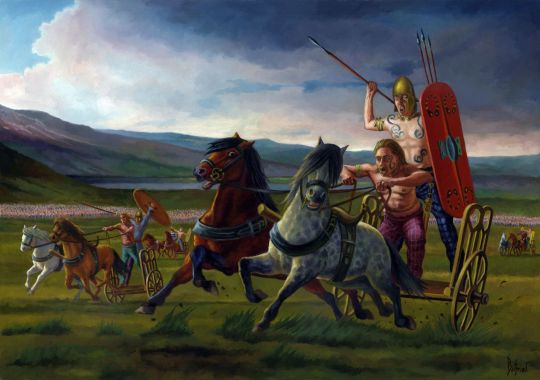

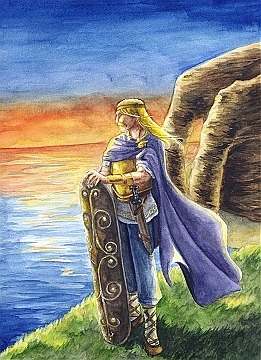
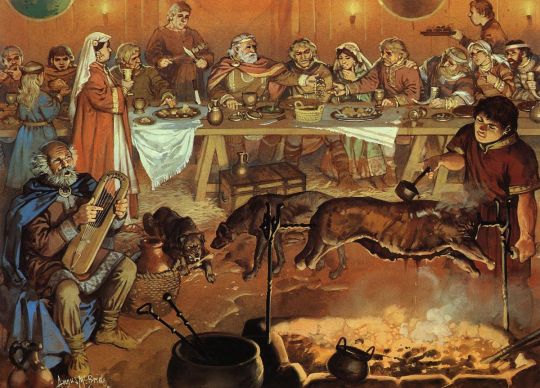
Spelling and Pronunciation
OI. Lughnasadh (Loo-na-sa), sometimes spelled Lughnasa or Modern Irish Lúnasa. Not to be confused with other harvest festivals like Lammas.
Dates
Most reconstructionists celebrate Lughnasadh on July 31st - August 1st from sundown to sundown by the Gregorian calendar, while others choose to celebrate the transitional period between the months as they would have been by the Julian calendar (about 13 days later by the Gregorian calendar).
Traditionally this festival likely would have happened as the grains were ready for harvesting or possibly even when the wild bilberries were ripe (as some scholars mention that if the grains were not ripe they would still preform a ritualized ‘first harvesting’ but it is possible this tradition came after the festival was firmly tied to a calendar date.)
Importance in the Mythos
In the mythologies it is well documented that this festival coincides with Lugh’s funeral games in honor of his foster-mother Tailtiu, known as Aonach Tailteann. In the mythologies she is said to have died of exhaustion after clearing the plains of Ireland for agricultural needs. The first documented instance of Lughnasadh in the mythologies was in the Wooing of Emer, Tochmarc Emire, which makes sense given the importance of marriages at this time of the year. It is not known specifically but widely speculated that the curse of the Ulstermen by Macha took place at a horse race for this festival.
In later time periods it is common to see a form of struggle, normally between the ‘protective’ forces and ‘destructive’ forces. The modern equivalent being the struggle between Saint Patrick and Crom Dubh but this is likely a reflection of an early struggle between Lugh and Balor (which I previously mentioned in my info-dump on Bealtaine).
Celebration Traditions
Aonachs, funeral games, have (to the best of our knowledge) been a custom in Ireland since the bronze age and were practiced on and off into the middle ages. They had both personal and community functions and occurred in three stages. Stage one was the funeral proceedings themselves. They would last one to three days, likely depending on the importance of the individual in question. Mourning songs and chants were participated in by both the attendees and the Druids. The second stage was for proclaiming of laws. Aonachs were a time when universal peace between túaths was declared. The third stage was that of Cuiteach Fuait, games that tested mental and physical abilities. These games included the well known horse and chariot races, wrestling games, boxing, high jumps but also competitions in strategy, singing, story telling and between various skilled craftsmen.
It was incredibly common for marriages to be arranged and preformed during this festival. More well known ‘trial marriages’ (lasting a year and a day) were still preformed at this festival up until the 13th century. It is likely that the coupling occurring at this time of year had an effect on the relationship to births seen at Imbolg (which falls 9 months later).
MacNeill, a leading scholarly expert on the festival, notes that a ritualistic bull sacrifice was made at this festival and the bull would then be eaten. I could not find any definitive evidence to support the idea, but I think it was likely that bulls in general would be culled from the herd at this point in the year to supply the feast.
Art credit @ire-ethereal
#irish#irish mythology#celtic#irish paganism#irish polytheism#paganism#celtic paganism#celtic polytheism#pagan#celtic reconstructionist#celtic reconstructionism#celtic mythology#irish reconstructionism#irish reconstructionist#festival#fire festival#lugh#lughnasadh#Lughnasa#NOT lammas#Tailtiu#harvest#blackcrowing
262 notes
·
View notes
Text
Lughnasadh in the Modern Day
The ancient festival of Lúnasa is one of the 4 celtic fire festivals celebrated on the turn of the seasons. The other 3 festivals all have very clear christian reinterpretations. Those being All Hallows Eve, St Brigids day and May day. However Lúnasa also has a number of modern day christian holidays associated with it in much the same way.
(Linked sources in brackets)
Names
The modern festival goes by many names: Domnach Lúnasa, Lá Lúnasa, Domnach Crom Dubh, Bilberry Sunday and most commonly as either Reek Sunday or Garland Sunday. (1)(2)
Hill Climbing & Holy Wells
This is a day where the mountain of Croagh Patrick is visited, the pilgrimage consists of climbing the mountain while taking stops at certain stone cairns, where one walks in circles around them a set number of times while reciting specific prayers. There are 3 major sections where this is done(3). This is still observed today(4). It is celebrated on the last Sunday of July.
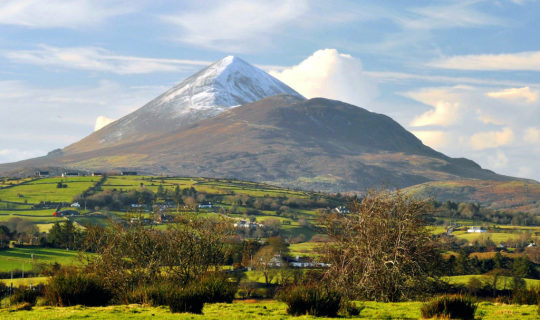
(Croagh Patrick)
This, while observed throughout the country, is not the only such celebration. Many towns climb their respective hills on this day such as those around Keash Hill in Sligo(2)(5)(11), Slive Donard in Down(6), and Máméan in Galway (7). Holy wells are also visited on this day such as in Cappagh, Galway(8), Ballyfa, Galway(9) and Ballyhaunis, Mayo (12). In some cases a procession from the Holy Well to the hill takes place (2)(7)(11)
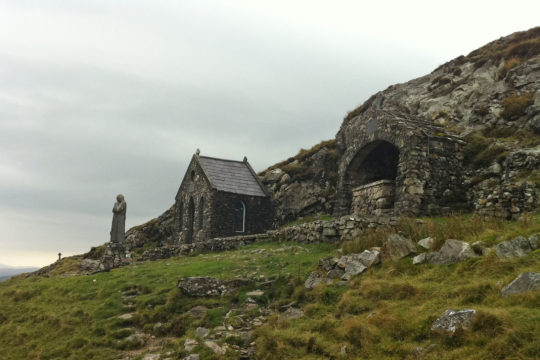
(Máméan)
An interesting example of this was the Tullaghan Hill holy well in county Sligo, where the Holy Well was on a hill specifically the Ox mountains. This specific well used to be visited on Garland Sunday but is no longer as the festival that followed this visit evoked too much "secular fun" (10).
Festivals
Fairs and celebrations seem to be a core feature of this Lúnasa Tradition, with the aforementioned Tullaghan Hill fair, The Old Fair Day in Tubbercurry, county Sligo (13) and Fair Day in Kenmare, Kerry(14). These are usually celebrated in the second week on August, i.e. a week or two after the religious excursion.
The Puck Fair is festival in Killorglin, county Kerry. It is celebrated in the second week of August and involves crowning a specific goat "king" and parading them around while a large fair takes place(15).

(Puck Fair)
Mythology
In the dinseanchas entry for Nás, the death and burial of two of the wives of Lugh are described, with Bui having been buried on the Hill of Cnogba. Where it is said that "The hosts of the pure Gaels came to bewail the women". Suggesting that there was a precession to the Hill she was buried. There was then said to be mass mourning which grew into a great assembly. These events were said to have contributed to the beginning of the festival of Taltiu, which is to say Lúnasa. (16)
Pagan Connection
The pagan connection is quite clear to see, with Holy wells long being sites of pre-Christian worship, it is little coincidence that they are visited around the time of Lúnasa. The climbing of a hill seems to be widely practiced over the country and directly connects to the Dinseanchas story of the beginning of the Lúnasa festival in where a hill was climbed to reach a grave for mourning. The fact that Keash Hil (Ceis Corran) and Croagh Patrick are both home to ancient megalithic cairns, which are commonly connected with the Otherworld is also an interesting point.
Lúnasa being an Aonach, a funeral festival for the foster mother of Lugh, Tailtiu does tie directly into the occurrence of festivals around this time.
Practices to Adopt
It seems clear now that visiting watery sites such as wells and climbing hills to worship, as well as large scale festivals and merriment are a key part of how Lúnasa has continued to be celebrated and should be incorporated into a modern Irish pagan practice.
#irish paganism#celtic paganism#gaelic paganism#ireland#féile#Lúnasa#lughnasadh#irish reconstructionist#irish reconstructionism#irish polytheism#celtic polytheism#gaelic polytheism#wheel of the year#witch#witchblr#paganism#the source numbers got a little out of order dont mind that though#irish mythology#mine
145 notes
·
View notes
Text
Cernunnos: The Good Liar
And now that I've probably offended a few people with my snazzy new epithet for the guy, it's time for me to try to spill some UPG all over this page.
Cernunnos is very special to me; he was the first deity to reach out to me and he's been a central point of my practice for as long as I've been active in it (there've been a few accidental hiatuses). He's introduced me to my second most important deity, the Horned Serpent, and through that, pointed me down the path I now currently walk.
I think, at least in GaulPol, he's pretty well known as a liminal deity, but that one has never quite sat perfectly for me. I think as I present my notes of my UPG, it'll become clear that Cernunnos as I understand him is more of a "union of opposites" than a "between all things" - something I definitely wouldn't have been able to enunciate not long ago.
First I remember not really having a clear way to describe him beyond "Druid, I think", which would at first glance look like a liminal role if it weren't for the fact I couldn't quite square that away in my head. And then I gave him a couple epithets, "Keeper of Secrets" and "Provider of Ecstacy" (both of these were written back to back, in the same prayer, and I still stand by them).
Then I began using the title "Songmaster(s)" for the three main deities on the interior of the Gundestrup Cauldron - Cernunnos, Taranis/the wheel god, and the Mother-Queen - and I began to look at music as a way for the gods to create, not just stories but create reality itself.
The next major one I remember is writing a prayer and sharing it with a Discord community October 31st 2022:
Songmaster, First Dancer
Truth is your friend and secrets are your trade
Madness, your tool, peace, your accomplishment
Your quiet patience is unshakeable, and your quick action is keen
And recently, as I was singing and trying to reflect on his relationship with the Mother-Queen, I found myself scribbling down some notes from a song I didn't fully intend to sing, addressed to him (quotes are exact lines):
"she shines on you, and you grow"
Shadow, child of sun; darkness, friend of light
"embrace light, embrace night all the more"
I heavily associate the Mother-Queen with the sun, light, and fire, and have had the thought "her light touches all things" in my head for a minute, and Cernunnos I associate with a dark, shadowy forest because of a couple of intense experiences, so the poetic play there was pretty obvious, but it took me a bit to start piecing out what this is all supposed to mean. One friend pointed out that, as we learn, as truth is illuminated to us, it also reveals how deeply our ignorance runs. Which I definitely think is a solid read, but for me personally, for my relationship with him specifically, I think it's deeper than that.
I've also come to believe that the interior panels of the Gundestrup Cauldron are a loose guide of what kind of religious life was expected of the practitioners, so I take it as a loose guide for me. And honestly, going into detail is going to require probably multiple series, but for now suffice it to say that I believe that, when we die, some of those people will be selected to try and earn a kind of divine status. I believe Cernunnos' primary role as depicted on the Gundestrup Cauldron is in teaching harmony between individuals and possibly between the natural world. I also interpret the Horned Serpent as the guide for those who've been chosen to try their hand at earning divinity. So in this context, Cernunnos is the teacher and the Horned Serpent a kind of deliverer.
Okay, that's all well and good, but what does that have to do with the rest of this rant? I've come to the conclusion that, if the Mother-Queen reveals, then Cernunnos' role to her is that he obfuscates. That he purposefully obfuscates certain truths in order that his devotee can learn. I think it's because there are certain lessons that can't really be told - not if you plan on these lessons actually sticking. Wisdom is earned, not given.
Hence the new epithet, "The Good Liar" - he who obfuscates things behind silence or confusing ideas that his student might find truth on their own accord, and come to a new and better place, perhaps even arming his devotees with the skills to move through whatever trials may await us after death.
#balkan paganism#celtic paganism#gaulish polytheism#personal gnosis#thracian polytheism#dacian polytheism#thracian#dacian#Gundestrup Cauldron#reconstructionism
21 notes
·
View notes
Text
As a pagan myself, so many pagans need to stop appropriating history to ft the narrative that paganism is somehow a superior religion.
And I mean this for like... ignoring that queer people were NOT accepted in Ancient Greece, relationships between grown men and boys were. So the love stories about how Achilles and Patroclus were in love, sure they were together, but one of them was a kid, they would not have been together with both as adults.
The superiority complex really sucks ass, because you don't need it, it causes the pipeline from paganism to alt right behaviour and beliefs. The superiority complex is inherently problematic and this isn't about being a reconstructionist or whatever, but we need to listen to history to avoid making statements that support some sort of moral superiority that straight up doesn't exist.
Another thing thats useful to accept, a lot of the songs we say were initially pagan were not. Because pagan was a slur used initially by the romans to insult and persecute those who believed in multiple deities, no pagan from the times where paganism was culturally accepted would be calling themselves pagan, the word is a modern reclamation.
Pagans are not better or worse than any other religious group.
(To clarify, yes of course pagans were prosecuted by Christians, thats not the debate, the problem is the superiority complex because it just leads to the alt right pipelone)
#hot pagan takes#paganism#pagan#hellenistic#hellenic reconstructionism#reconstructionism#celtic#celtic pagan#kemetic pagan#norse pagan#witchcraft#roman polytheism#polytheism#germanic polytheism#norse polytheism
22 notes
·
View notes
Text
Brighid and Bee swarms: I will not molest the swarm queen, nor will the swarm queen molest me.
"Carmichael (1928), in his review of Scottish customs attaching to the Feast of Saint Brigit, speaks of what he calls 'a propitiatory hymn' sung to 'a serpent' which 'is supposed to emerge from it's hollow among the hills on St Bride's Day'. Some of the versions of the 'hymn', describe what emerges from a tom, 'the knoll', as rigen ran, 'a noble queen', and, on the basis of my argument hitherto, I take this to be a clear reference not to any serpent, but rather to the queen bee and, therefore, by implication, to Brigit herself.
La Bride nam brig ban
On the day of Bride of the white hills
Thig an rigen ran a tom
The Noble Queen will com from the Knoll,
Cha bhoin mise ris an rigen ran
I will not molest the Noble Queen,
's cha bhoin an rigen ran rium
Nor will the noble queen molest me.
By way of further support for this reading, an emendation of Carmichael's interpretation of a tom as 'the knoll' can easily be made, substituing for 'knoll', 'round heap', 'conical knoll', 'ant-hill', dictionary definitions of tom (Dwelly, 1918), one or all of which readily could be taken as referring to a bee-nest or bee-hive. Likewise, Carmichael's reading of rigen ran as 'noble queen' may also be open to an interpretation other than that offered by him here: the qualifying element ran, taken by Carmichael to be the adjective ran 'noble', constitutes a suitable soubriquet for a royal personage, to be sure, but it is also a word which might easily be confused with ràn meaning, among other things, 'melancholy cry', 'drawling, dissonant roar or cry' (Dwelly, 1918). Needless to say, the idea of a 'noisy' rather than a 'noble' queen slots in well with the tumult which accompanied swarming according to early writers (...)"
—Hearth-prayers and other traditions of Brigit: Celtic goddess and holy woman. Article by Ó Catháin (Séamas) in JRSAI 122 (1992), pp. 12–34.
#brighid#brigit#saint brigit#carmina gadelica#irish polytheism#irish recon#irish reconstructionism#scottish polytheism#scottish reconstructionism#scottish recon#brighid goddess#celtic recon#celtic polytheism#highlands#quotes#st bride#imbolc#imbolg
4 notes
·
View notes